- Home
- James Rollins
The Judas Strain Page 7
The Judas Strain Read online
Page 7
Page 7
He was also relieved his partner, Dr. Lisa Cummings, had remained back aboard the cruise ship on the other side of the island. The Mistress of the Seas floated in Flying Fish Cove, safely upwind of the sickening pall that wafted across the island from the toxic soup on its western side.
But others had not been as lucky.
Upon arriving at daybreak, Monk had witnessed the hundreds of men, women, and children being evacuated from the island, all in various states of contamination: some blind, others merely blistered, the worst with skin dying off in pustulant slides. And though the toxic readings were rapidly declining, the entire island was being cleared as a safety precaution.
The Mistress of the Seas, a giant luxury cruise ship out on its maiden voyage among the Indonesian islands, had been evacuated and diverted, turned into an emergency medical ship. It also served as the operations center for the World Health Organization's team, called in to discover the cause and source for the sudden poisoning of the surrounding seas.
It was also why Monk was out here this morning, seeking some answers in the aftermath of the tragedy. Back aboard the ship, Lisa's skill as a medical doctor was being put to hard use while Monk's training had him tromping through this cesspool. Because of his expertise in forensics—medical and biological—he had been handpicked for this particular Sigma assignment. The op had been classified as low risk—survey only—an operation to ease him back after taking two months off for family leave.
He shied away from that last thought. He didn't want to think of his little baby girl while slogging through the filth here. Still, it couldn't be helped. He flashed back to Penelope's blue eyes, pudding cheeks, and impossible corona of blond hair, so unlike her father's shaved head and craggy features. How could something so beautiful share his genes? Then again, his wife may have stacked the deck in that department. Even here, he could not dismiss the ache in his chest, a physical longing for them, as if a tether bound him as surely as any umbilical cord, a sharing of blood between the three of them. It seemed impossible he could be this happy.
Up ahead, his guide, Dr. Richard Graff, a salt-hardened oceanic researcher out of the University of Queensland, had dropped to one knee. He knew nothing of Monk's true identity, only that Monk had been recruited by the WHO for his expertise. Graff settled his plastic sample case atop a flat shelf of rock. Through the face shield, the man's bearded countenance was tight with worry and concentration.
It was time to get to work.
The pair had been dropped off in an inflatable rubber Zodiac. The pilot, a sailor from the Royal Australian Navy, remained at the boat, beached beyond the kill zone. An Australian Coast Guard cutter had arrived to oversee the island's evacuation.
The remote island, resting fifteen hundred miles northwest of Perth, was still Australian territory. First discovered on Christmas Day in 1643, the uninhabited island was eventually colonized by the British to take advantage of its phosphate deposits, setting up a major mine here, employing indentured workers from throughout the Indonesian islands. And though the mines were still in operation, the tropical island's main industry had turned to tourism. Three-quarters of the island's highlands, thick with rain forests, had been declared national parklands.
But no tourists would be flocking here anytime soon.
Monk joined Dr. Richard Graff.
The marine researcher noted his arrival and waved a gloved hand to encompass the massive die-off here. "It started a little over four weeks ago, according to reports of some local fishermen," explained Graff. "Lobster traps were found full of empty crustacean shells, the flesh dissolved away inside. Trawling nets blistered hands when pulled from the sea. And it only grew worse. "
"What do you think happened here? A toxic spill of some sort?"
"No doubt it was a toxic assault, but it was no spill. "
The scientist unfolded a black collection bag, emblazoned with a hazardous chemical warning, then pointed to the nearby surf. The waters frothed with a foamy yellowish slurry, a poisonous stew thick with meat and bones.
He waved an arm. "That is all Mother Nature's handiwork. "
"What do you mean?"
"You're looking at slime mold, mate. Composed of cyanobacteria, an ancient predecessor of the modern bacterium and algae. Three billion years ago, such slime flourished throughout the world's oceans. And now it's on the rise again. It was why 1 was called in here. Such organisms are my primary area of expertise. I've been studying such blooms out near the Great Barrier Reef, specifically one called fireweed. A mix of algae and cyanobacteria that can cover a soccer field in less time than it would take you to eat lunch. The bloody creature releases ten different biotoxins, potent enough to blister skin. And when dried, it can aerosolize with the burning force of pepper spray. "
Monk pictured the devastation back at The Settlement, the island's largest township. It lay not far from the bay here, in the path of the tradewinds. "Are you saying that's what happened here?"
"Or something like it. Fireweed and other cyanobacteria are blooming all across our oceans. From fjords of Norway to the Great Barrier Reef. Fish, coral, and marine mammals are dying off, while these ancient slimes, along with venomous jellyfish, are blooming. It's as if evolution were running in reverse, the oceans devolving into primordial seas. And we've only ourselves to blame. Runoff of fertilizers, industrial chemicals, and sewage have been poisoning deltas and estuaries. Overfishing of the past fifty years has driven the population of large fish down by ninety percent. And climate change is acidifying and warming the waters, lessening its ability to hold oxygen, suffocating marine life. We are rapidly killing the seas beyond the ability to heal. "
With a shake of his head, he stared out at the dead pool. "In its wake, we are seeing the return of seas from a hundred million years ago, teeming with bacteria, toxic algae, and venomous jellyfish. Such dead spots are found all around the world. "
"But what caused this one?"
That was the question that drew them all here.
Graff shook his head. "A new unidentified slime mold. Something we haven't seen yet. And that's what scares me. Marine biotoxins and neurotoxins are already the most potent poisons in the world. So nasty that they are beyond even man's ability to duplicate. Did you know saxitoxin, from bacteria in certain shellfish, has been classified by the United Nations as a weapon of mass destruction?"
Monk grimaced through his face shield at the seas here. "Mother Nature can be a nasty bitch. "
"The greatest terrorist of them all, mate. Best not to piss her off. "
Monk didn't argue.
With the biology lecture over, he bent down and helped organize the collection kits. He struggled, fighting the plastic gloves of his suit. He was further compromised by a numb left hand. Maimed after a previous mission, he now wore a five-fingered prosthesis, state-of-the-art, chocked full of the latest in DARPA gadgetry, but synthetics and bioelectronics were not flesh. He cursed a bit as he fumbled a syringe into the sand.
"Careful with that," Graff warned. "I don't think you want to puncture your suit. Not out here. Though the toxic readings are receding, we'd best be cautious. "
Monk sighed. He would be glad to be out of this monkey suit, back aboard the ship, back to his own suite. En route to the island, Monk had pulled strings to have an entire forensics suite airlifted to the cruise ship. That's where he'd rather be.
But first they needed lab samples. And plenty of them. Blood, tissue, and bone. From fish, shark, squid, dolphin.
"That's odd," Graff mumbled. He stood and glanced up and down the beach.
Monk joined him. "What?"
"One of the most ubiquitous animals on the island is Geocarcoidea natalis. "
"And in English, that would be . . . ?"
Graff stood up and glanced up and down the beach. "I'm referring to the Christmas Island red land crab. "
Monk studied the fouled coastline. He had read up o
n the island's flora and fauna. The terrestrial red crab was the star of the island, growing to the size of dinner plates. Their annual migration was one of the wonders of the natural world. Each November, timed to lunar cycles, a hundred million crabs made a mad dash from jungle to sea, dodging Seabirds and attempting to prove their right to mate by surviving this gauntlet.
Graff continued, "The crabs are notorious scavengers. You'd think all the carcasses out here would attract them. Like the Seabirds. But I don't see a single one here, alive or dead. "
"Maybe they sensed the toxin and kept to their jungles. "
"If they did, such a factor might hold some clue to the origin of the toxin or the bacteria that produced it. Maybe they've encountered such a deadly bloom before. Maybe they're resistant. Either way, the faster we can isolate the source, all the better. "
"To help the islanders. . . "
Graff shrugged. "Certainly that. But more importantly, to keep the organism from spreading. " He studied the yellowish sluice, and his voice lowered with worry. "I fear this may be a harbinger of what all oceanic scientists have been dreading. "
Monk glanced to him for elaboration.
"A bacterium that tips the scales, an agent so potent it sterilizes all life in the sea.
"And that can happen?"
Graff knelt to begin the work. "It may already be happening. "
With that dour pronouncement, Monk spent the next hour collecting samples into vials, pouches, and plastic cups. All the while, the sun rose higher above the cliffs, glaring off the water, cooking him in his bio-suit. He began to fantasize about a cold shower and a frozen drink with an umbrella in it.
The pair slowly worked down the beach. Near the cliff face, Monk noted a cluster of charred incense sticks stuck in the sand. They formed a palisade in front of a small Buddhist shrine, no more than a faceless seated figure, long worn by sea and sand. It rested under a makeshift lean-to splattered with the bird droppings. He imagined the incense sticks being lit to ward against the toxic pall, seeking some heavenly intervention.

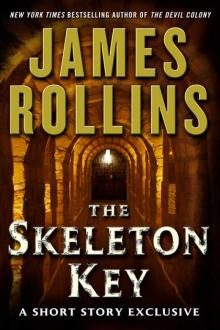 The Skeleton Key
The Skeleton Key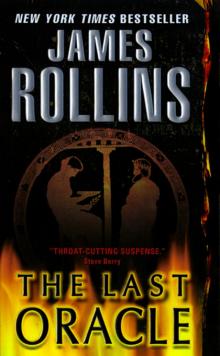 The Last Oracle
The Last Oracle The Judas Strain
The Judas Strain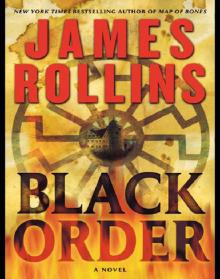 Black Order
Black Order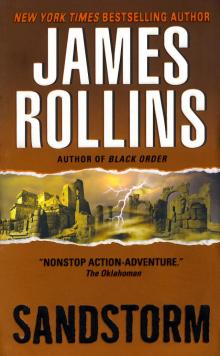 Sandstorm
Sandstorm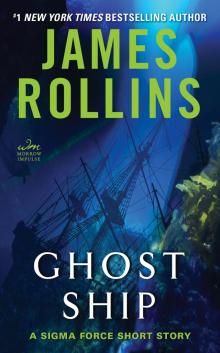 Ghost Ship
Ghost Ship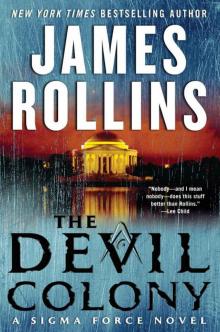 The Devil Colony
The Devil Colony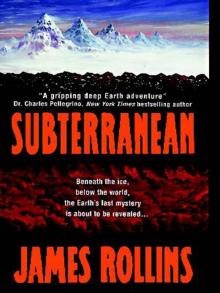 Subterranean
Subterranean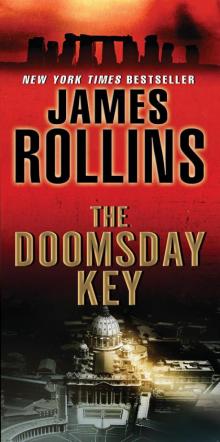 The Doomsday Key
The Doomsday Key The 6th Extinction
The 6th Extinction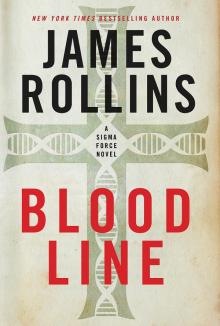 Bloodline
Bloodline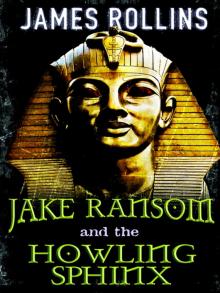 Jake Ransom and the Howling Sphinx
Jake Ransom and the Howling Sphinx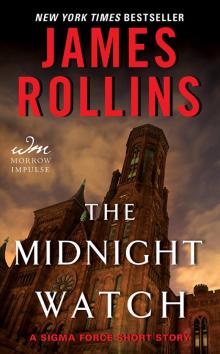 The Midnight Watch
The Midnight Watch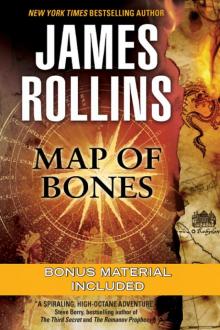 Map of Bones
Map of Bones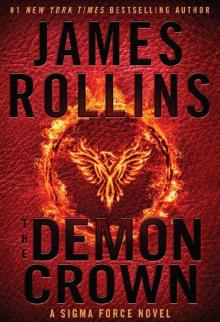 The Demon Crown
The Demon Crown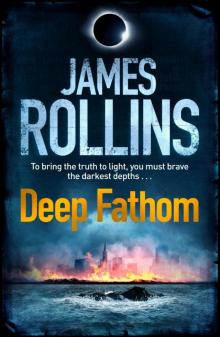 Deep Fathom
Deep Fathom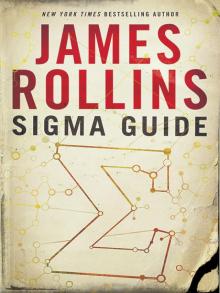 Sigma Guide
Sigma Guide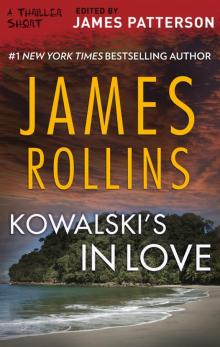 Kowalski's in Love
Kowalski's in Love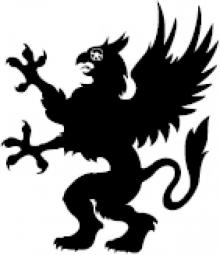 Jake Ransom and the Skull King's Shadow
Jake Ransom and the Skull King's Shadow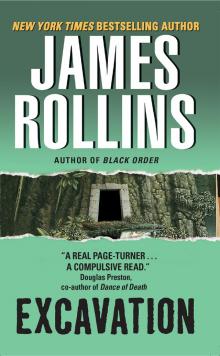 Excavation
Excavation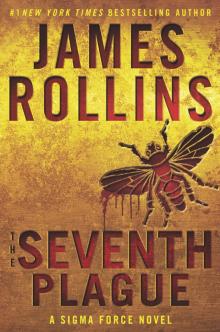 The Seventh Plague
The Seventh Plague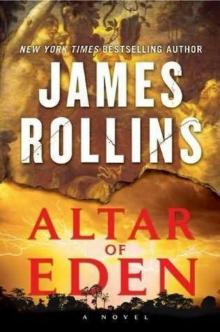 Altar of Eden
Altar of Eden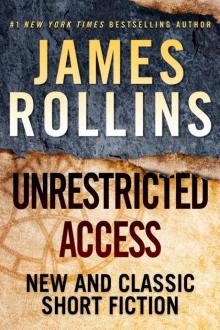 Unrestricted Access: New and Classic Short Fiction
Unrestricted Access: New and Classic Short Fiction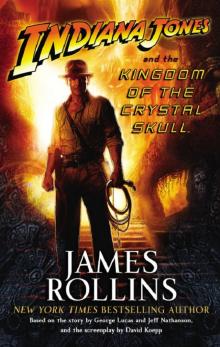 Indiana Jones and the Kingdom of the Crystal Skull
Indiana Jones and the Kingdom of the Crystal Skull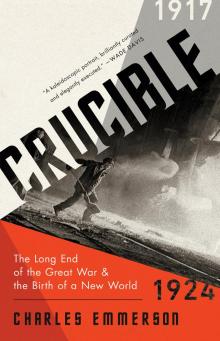 Crucible
Crucible The Eye of God
The Eye of God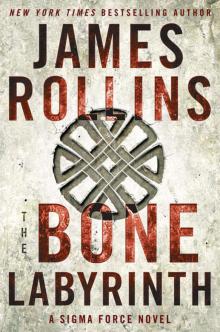 The Bone Labyrinth
The Bone Labyrinth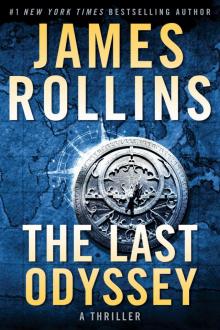 The Last Odyssey: A Thriller
The Last Odyssey: A Thriller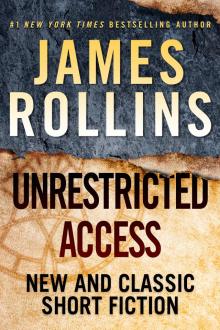 Unrestricted Access
Unrestricted Access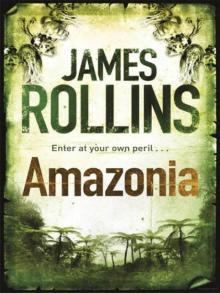 Amazonia
Amazonia Blood Brothers: A Short Story Exclusive
Blood Brothers: A Short Story Exclusive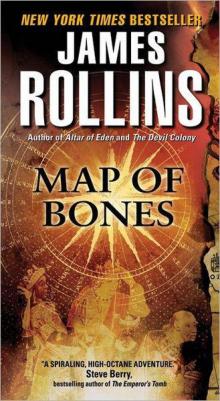 Map of Bones: A Sigma Force Novel
Map of Bones: A Sigma Force Novel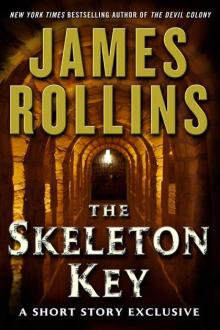 The Skeleton Key (sigma force)
The Skeleton Key (sigma force)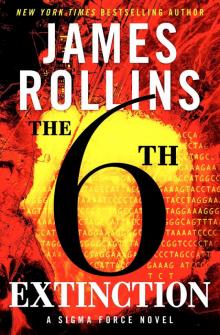 Sigma Force 10 - The Sixth Extinction
Sigma Force 10 - The Sixth Extinction Innocent Blood
Innocent Blood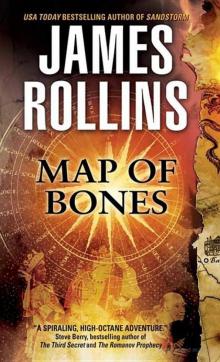 Map of Bones sf-2
Map of Bones sf-2 The Eye of God: A Sigma Force Novel
The Eye of God: A Sigma Force Novel The Eye of God: A Sigma Force Novel sf-9
The Eye of God: A Sigma Force Novel sf-9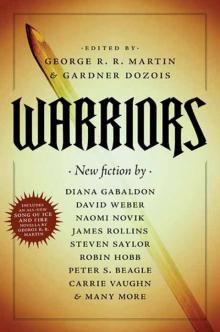 The Pit
The Pit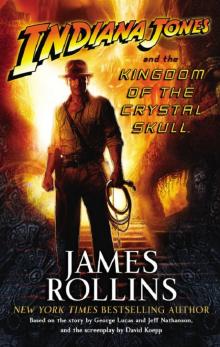 Indiana Jones and the The Kingdom Of The Crystal Skull
Indiana Jones and the The Kingdom Of The Crystal Skull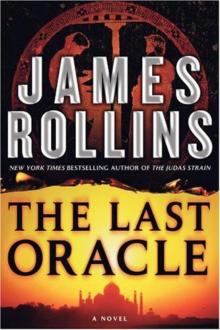 The Last Oracle (2008) sf-5
The Last Oracle (2008) sf-5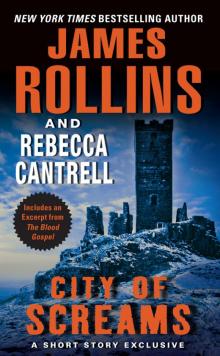 City of Screams
City of Screams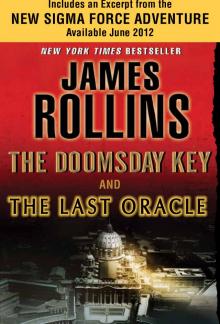 The Doomsday Key and The Last Oracle with Bonus Excerpts
The Doomsday Key and The Last Oracle with Bonus Excerpts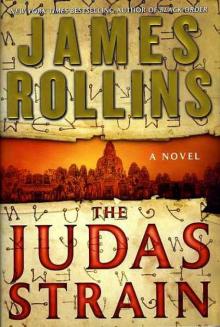 The Judas Strain sf-4
The Judas Strain sf-4 Blood Infernal
Blood Infernal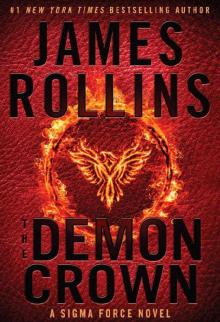 The Demon Crown: A Sigma Force Novel
The Demon Crown: A Sigma Force Novel War Hawk: A Tucker Wayne Novel
War Hawk: A Tucker Wayne Novel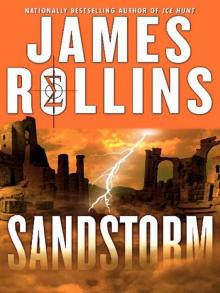 SANDSTORM sf-1
SANDSTORM sf-1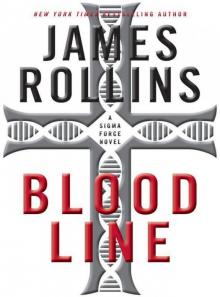 Bloodline: A Sigma Force Novel
Bloodline: A Sigma Force Novel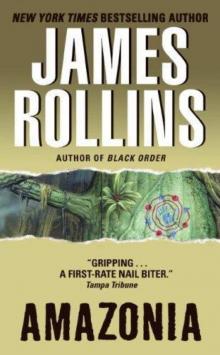 Amazonia: a novel
Amazonia: a novel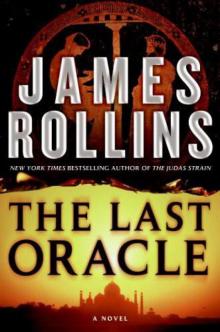 The Last Oracle: A Sigma Force Novel
The Last Oracle: A Sigma Force Novel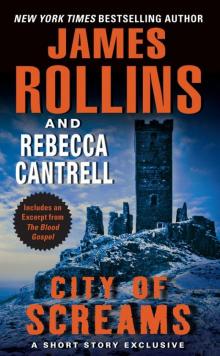 City of Screams (the order of the sanguines)
City of Screams (the order of the sanguines)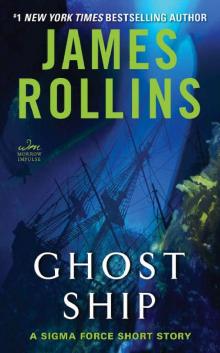 Ghost Ship: A Sigma Force Short Story
Ghost Ship: A Sigma Force Short Story The Doomsday Key: A Sigma Force Novel
The Doomsday Key: A Sigma Force Novel